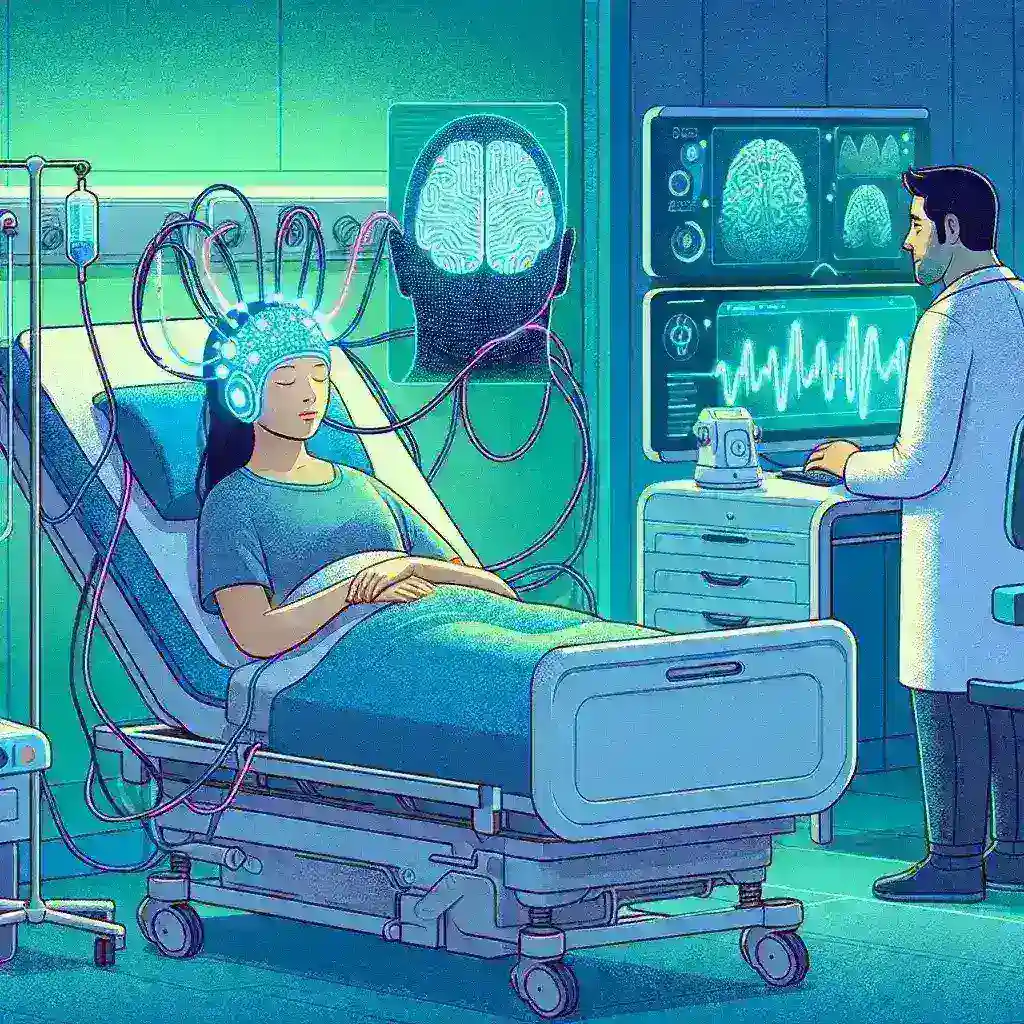Introduction
The advent of AI-powered brain-computer interfaces (BCIs) has opened new pathways for individuals with paralysis, allowing them to regain communication abilities that were once thought to be lost forever. This technology harnesses the power of artificial intelligence to decode brain signals and translate them into actionable outputs, fundamentally changing how paralyzed patients interact with the world.
The Science Behind Brain-Computer Interfaces
Brain-computer interfaces are systems that establish a direct communication pathway between the brain and an external device. These interfaces work by detecting the electrical activity of neurons, which can be interpreted using AI algorithms. The process can be broken down into several steps:
- Signal Acquisition: Electrodes are placed on the scalp (non-invasive) or directly on the brain (invasive) to capture brain signals.
- Signal Processing: The captured signals are filtered and amplified for clarity.
- Decoding: AI algorithms analyze the processed signals to identify patterns associated with specific thoughts or intentions.
- Output Control: The decoded signals are translated into commands that can control devices, such as computers or speech synthesizers.
Historical Context
Brain-computer interfaces have been a topic of research since the late 1960s. Early studies demonstrated the potential for direct communication between the brain and machines, but it wasn’t until the 1990s that significant breakthroughs occurred. Researchers began developing algorithms capable of interpreting brain activity with greater accuracy. Fast forward to the 21st century, and the integration of AI has dramatically enhanced BCI capabilities, making it possible to restore communication for those with severe motor impairments.
Current Applications of AI-Powered BCIs
1. Restoring Communication
One of the most promising applications of AI-powered BCIs is in restoring communication to paralyzed patients. Many individuals who suffer from conditions such as ALS (Amyotrophic Lateral Sclerosis) or spinal cord injuries retain intact cognitive function, but their ability to speak or type is compromised. BCIs can enable these individuals to communicate via text or speech synthesis by translating their brain signals into words.
2. Assistive Technologies
BCIs are being integrated into various assistive technologies, such as smart home devices and computer systems. This integration allows paralyzed individuals to control their environment, surf the internet, and even engage in social media, thereby enhancing their independence and quality of life.
3. Enhancing Rehabilitation
AI-powered BCIs are also being used in rehabilitation settings, allowing patients to engage in tailored therapy sessions that leverage their brain activity to promote recovery. By using BCIs to track progress, therapists can customize treatment plans more effectively.
Pros and Cons of AI-Powered BCIs
Pros
- Restoration of Communication: BCIs provide a means of communication for individuals who are unable to speak.
- Independence: Patients can regain control over their environment, improving their quality of life.
- Real-Time Interaction: AI algorithms allow for quick processing of brain signals, enabling near-instantaneous communication.
Cons
- Cost: The technology can be expensive, limiting access for some patients.
- Complexity: The systems can be complex to set up and require extensive training to use effectively.
- Ethical Concerns: Issues surrounding privacy and the potential for misuse of technology need to be addressed.
Future Predictions
As research continues, the future of AI-powered brain-computer interfaces looks promising. Here are a few predictions for the coming years:
- Increased Accessibility: Advances in technology will likely reduce the costs associated with BCIs, making them more accessible to a larger population.
- Enhanced User Experience: Improvements in AI algorithms will lead to more intuitive interfaces that require less training.
- Integration with Augmented Reality: Future BCIs may integrate seamlessly with augmented reality systems, further enhancing communication and interaction capabilities.
Real-Life Examples
Several groundbreaking projects have showcased the potential of AI-powered BCIs:
- BrainGate: This pioneering project has allowed individuals with paralysis to control cursor movements and robotic arms using their brain signals.
- Neuralink: Established by Elon Musk, Neuralink is developing high-bandwidth BCIs with the goal of enabling human-computer interaction at unprecedented levels.
- University Research Initiatives: Numerous universities worldwide are conducting cutting-edge research in BCIs, developing systems for communication and mobility.
Cultural Relevance
The development of AI-powered BCIs resonates deeply with themes of empowerment and independence within society. As technology progresses, the narrative surrounding disability and communication is shifting towards inclusivity and capability. This is not just a medical advancement; it’s a societal movement towards recognizing the potential within every individual, regardless of physical limitations.
Conclusion
AI-powered brain-computer interfaces represent a revolutionary leap in medical technology, offering hope and communication solutions for paralyzed patients. As research and development continue, we can expect these systems to become more refined, accessible, and integrated into everyday life. The journey towards restoring communication through BCI technology demonstrates not only the power of human ingenuity but also the profound impact it can have on enhancing the quality of life for those in need. With continued investment and research, the future holds promising possibilities for individuals seeking connection and independence.

